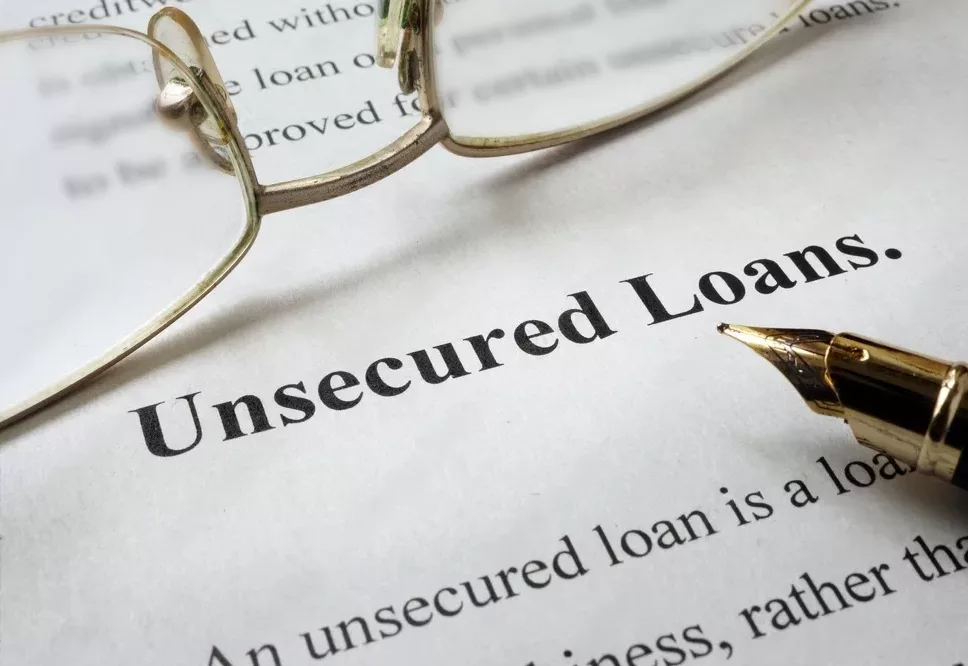Unsecured loans

Unsecured loans as the name suggests are given without any tangible security of any physical asset or intangible security like a personal guarantee of the third party. Generally, unsecured loans are given to individual against their personal undertaking to service the loan taken. Let us discuss in detail various facets of unsecured loans.
Who is eligible to avail the unsecured loan and who provides it?
The unsecured loans can be availed by a person who has a regular flow of income whether salaried or self-employed. Therefore a retired person or a student or a homemaker cannot apply for the unsecured loan. The unsecured loans are generally given in single name to a question of adding any family members as joint borrower does not arise. Almost all the major private sector banks, as well as private banks, are active in providing unsecured loans. In addition to banks, many Non-Banking Financial Companies (NBFCs) are also provided unsecured loans.
The rate of interest and processing fees
The rate of interest charged on unsecured loans is higher than other secured loans and varies from lender to lender as well as from borrower to borrower. The rate of interest charged by NBFCs is generally higher than charged by banks. Likewise, the interest charged to salaried is lower than to a self-employed person. Even amongst salaried, the persons working in reputed listed companies get unsecured loans at lower interest rates than other employees. The interest charged on the unsecured loan from a professionally qualified self-employed is generally lower than to the non-professional. The rate of interest also varies depending on credit history and a credit score of the borrower.
The lenders generally charge a processing fee varying between 0.5% to 2% depending on the loan amount. It is negotiable as well.
The tenure, repayment and prepayment of unsecured loans
The lenders generally give unsecured loans for a minimum period of 12 months and the maximum period can extend up to 60 months. Some of the lenders even have a tenure of unsecured loans up to 72 months. The unsecured loans are repayable by way of Equated Monthly Instalments (EMI). In the EMI the interest component is higher initially and gets reduced gradually over the loan tenure and principle component goes up gradually with the same amount. EMI is calculated in such a way that the entire loan gets repaid by end of the tenure. The repayment of the unsecured loans is made by direct debit to your bank account on the EMI date in case you have an account with the lenders. In case you do not have a bank with the lender or you have taken the unsecured loan from an NBFC, the repayment can either be done by post-dated cheques or through Electronic Clearing System (ECS).
The unsecured loans can generally be prepaid fully or partly after a certain number of EMIs have been paid. Majority of the lenders charge a penalty for prepayment of unsecured loans either in full or in part before the tenure initially fixed. The amount of such penalty depends on the amount of the loan being prepaid and when it is being repaid. Since borrowers generally chose a longer tenure unsecured loan to enhance overall eligibility in terms of amount, one should also evaluate the possibility of it being repaid before its tenure so as to optimise the loan amount, tenure and minimise the possibility of having to pay a prepayment penalty.
Documents to be submitted with the loan application
With the increased use of technology, most of the lenders allow you to apply for unsecured loans online in order to shorten the processing time. A few of the banks even promise you to credit the amount of such unsecured loan in your bank account within four houses in case you already have a salary account with them. One has to submit certain documents with an unsecured loan application. Even in the case of online applications you have to upload these documents or furnish them to the lender physically. As far as the documents to be submitted to the lenders are concerned, the buyer has to submit two sets of documents. Under the first set of documents which are called Know Your Customers(KYC) documents, you have to submit documents to prove your identity and address where you reside presently. For identity purpose, the borrower can submit any document issued by any government department with his photograph on it. So you can submit a passport, driving licence, PAN card, Aadhaar card, voter card or any other identity proof issued by the government department to its employees. Some lenders even accept the photo credit card for this purpose. For address proof, any of the above documents where your current address is given can be submitted. The other acceptable documents for this purpose include utility bills like telephone bills, electricity bills, housing society bill, property purchase agreement or leave and licence agreement in case you are staying in a rented place.
In addition to basic KYC documents, you also have to establish your repayment capacity with the help of your income documents. For a salaried just copy of latest salary slip with form no. 16 or copy of ITR is sufficient. However the self-employed have to submit some elaborate documents like copy of ITR filed for past two years with profit and loss account and balance sheet either duly certified by a Chartered Accountant or self-certified. If the self-employed is a professionally qualified person, he needs to submit documents in support of his membership of such professional bodies like Bar council, or Indian Medical Association. The non-professional self-employed borrower may have to submit a membership certificate in case he is a member of any trade body. The self-employed also have to submit documents for a place of business along with registration with tax and local authority like registration under shop and establishment act, Goods and Service Tax (GST).








